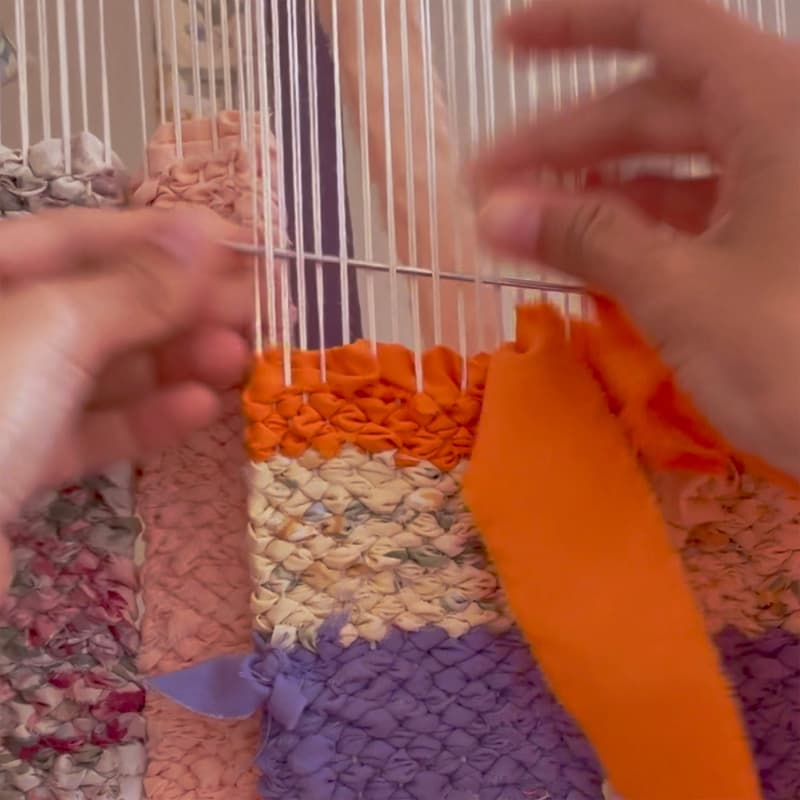

Rag Rug Primer: Strategies for Renewal
This workshop acknowledges the long lives of the textiles we live with, from humble sheets, to cherished shirts, to threadbare quilts, and introduces strategies for extending their roles in our lives.
What brings an everyday textile to the end of its useable life, to the brink of donation, recycling or discard? This workshop acknowledges the long lives of the textiles we live with, from humble sheets, to cherished shirts, to threadbare quilts, and introduces strategies for extending their roles in our lives.
Participants are invited to bring in a textile that, for whatever reason, has fallen out of use. In observance of each textile’s past, we’ll discuss the fiber content, structure, and traces of wear. We’ll then turn to the future, introducing time-tested methods of transformation, including braiding, crochet and weaving - accessible techniques that reveal the shimmering material potential in our midst and remind us of the power of small acts and our ability to shape the world around us.
Designed to encourage skill-sharing and improvisation, this workshop is open to participants at all skill-levels. After introductions and observation of each textile, we will move into the cathartic processing of each textile into useable material by cutting or tearing it into strips. After winding these strips into balls, we’ll move into the transformation, introducing braiding, crochet, and weaving as strategies for renewal. We’ll provide general guidance for each participant as well as take-home instructions to continue the generative process at home.
Program
Part 1
Circular format where each person places their textile in the middle and introduces both themselves and their textile. We handle each piece and observe its fiber content, structure, and traces of wear. This also serves as a general introduction to textile lifecycles. Depending on number of participants, we may do this in two groups.
Part 2
Collective deconstruction of each textile: cutting or tearing it into strips that can then be wound into a ball. This is a process of further discovery as each participant works with the unique shape and contours of their textile. We do this as one large group.
Part 3
Introduce the skills to transform each textile into something new. A brief introduction, with examples, to domestic textile recycling and to techniques of braiding, crochet, and weaving. Participants will gather into smaller groups based on the technique they choose to experiment with.
Part 4
Gather into large circle format to conclude, with everyone’s work in the middle. Final observations and invitation to bring finished work to Rag Rug Study Group’s future show-and-tells.
Rag Rug Study Group
Rag Rug Study Group (RRSG) is an event series and online archive that places reworked textiles in dialogue with contemporary art, design and architecture practice. We embrace the term ‘rag rug’ because rag rugs embody the creative practice of making do and using materials at hand. Our definition is expansive and our archive includes textiles in all techniques and for all functions that people share during our seasonal in-person show-and-tells. RRSG is a collaboration between artists and researchers Mariah Smith, who has a background in architecture, and Mae Colburn, whose background is in art history.